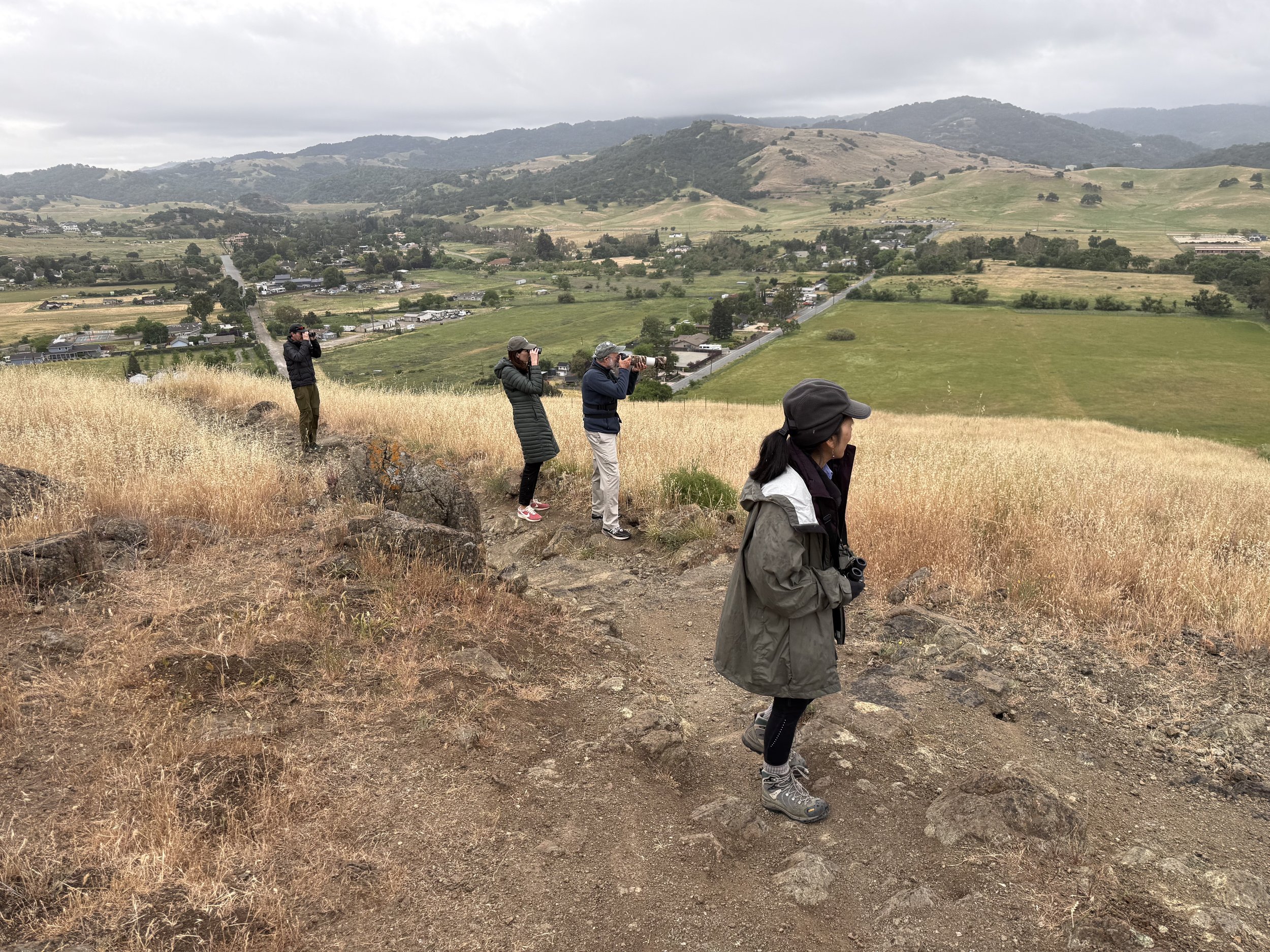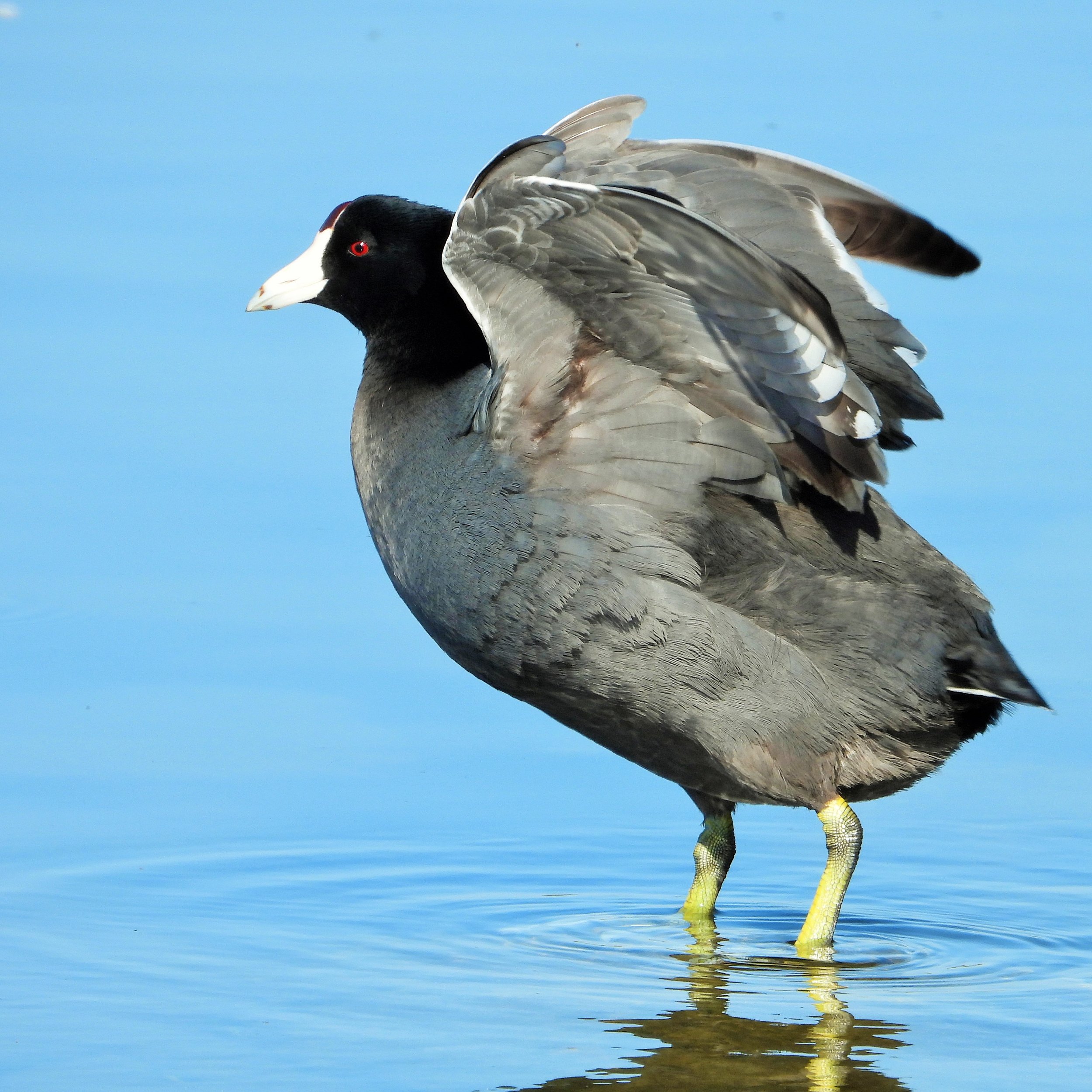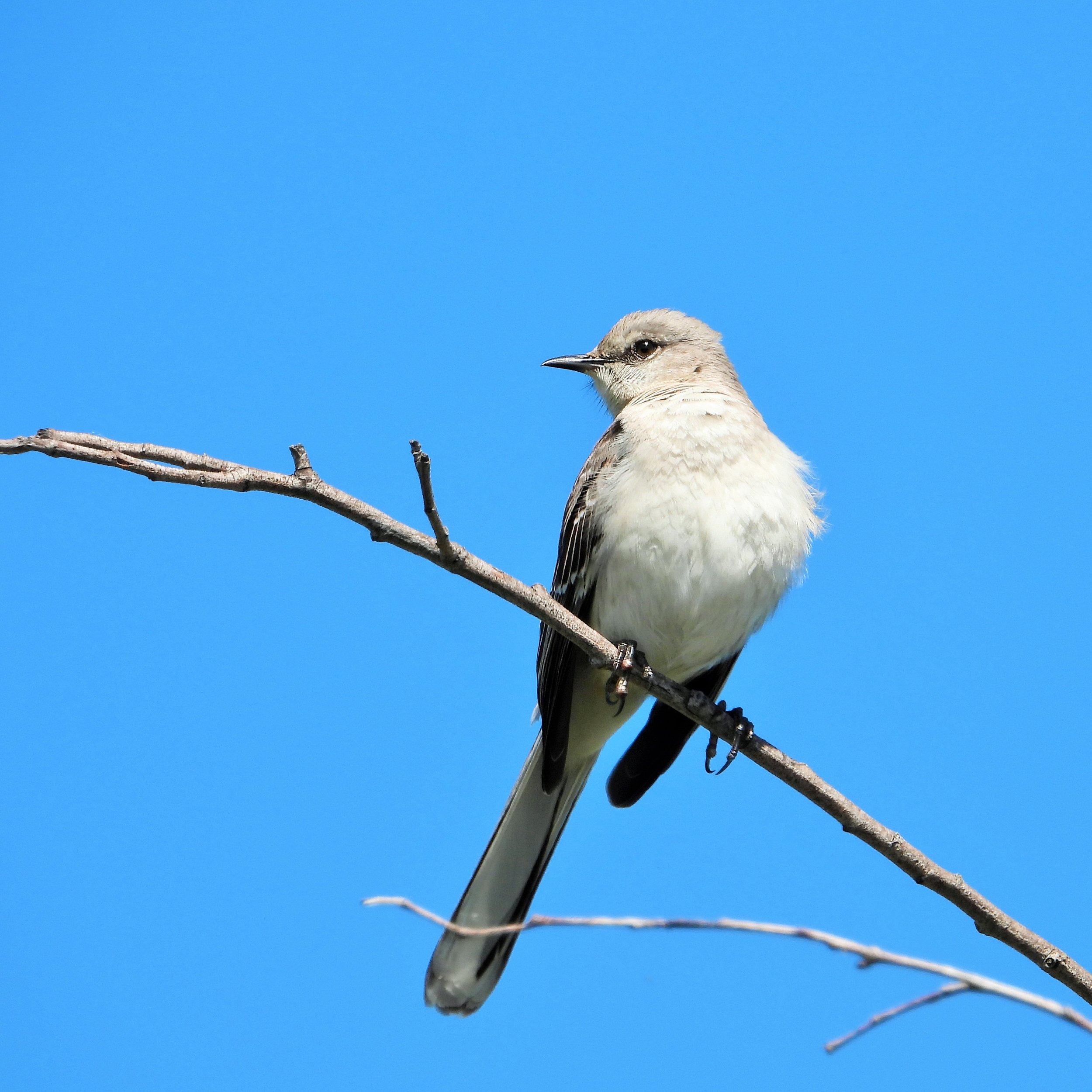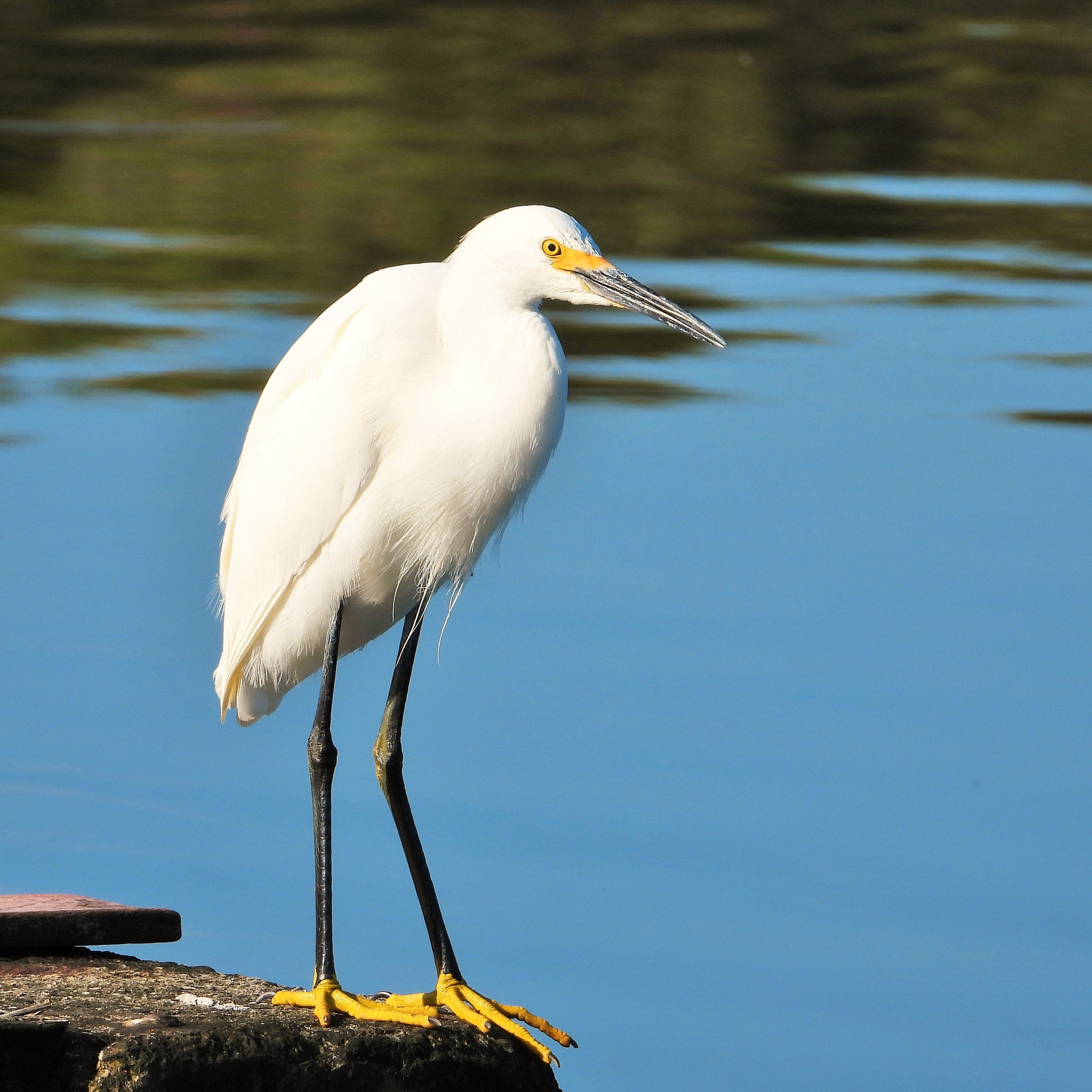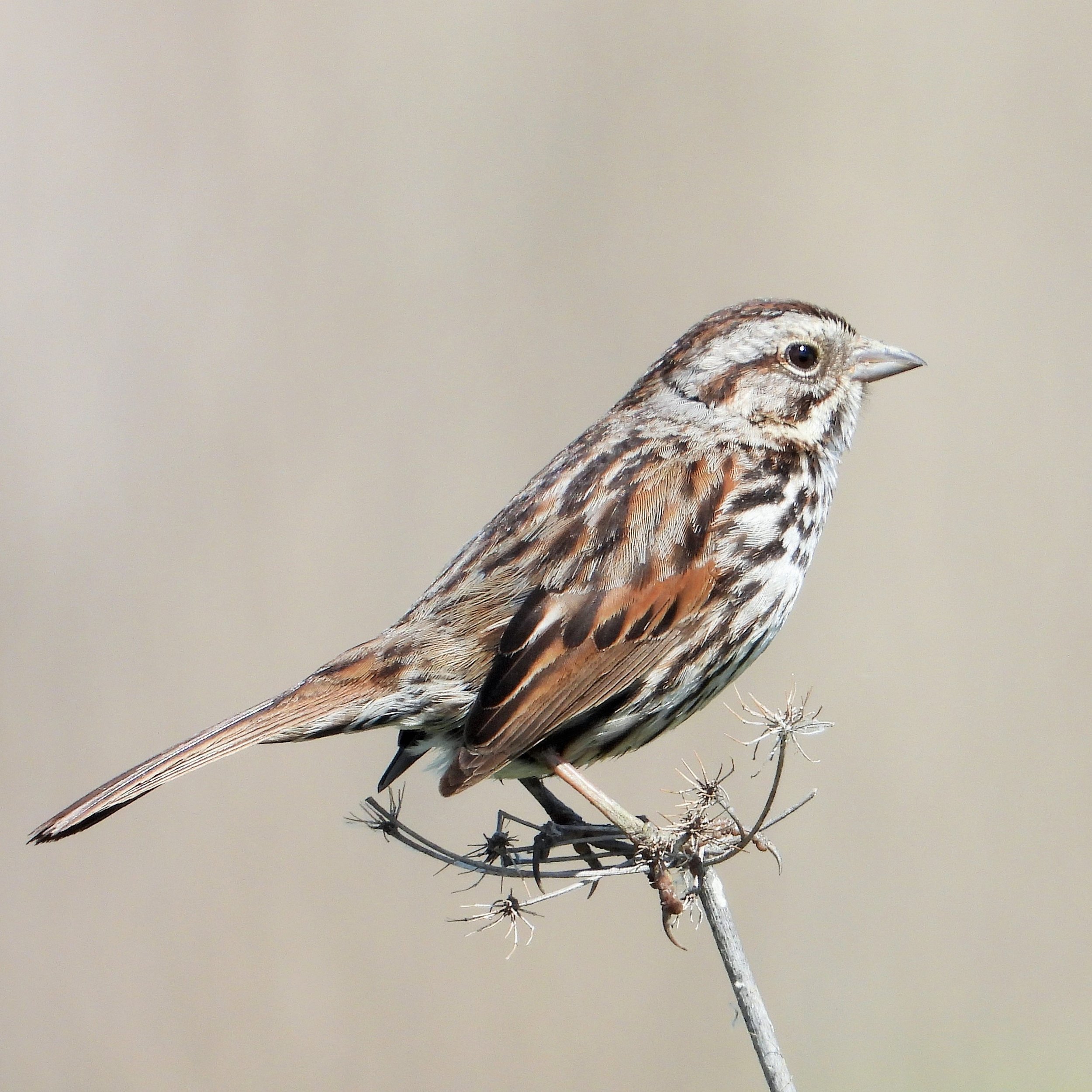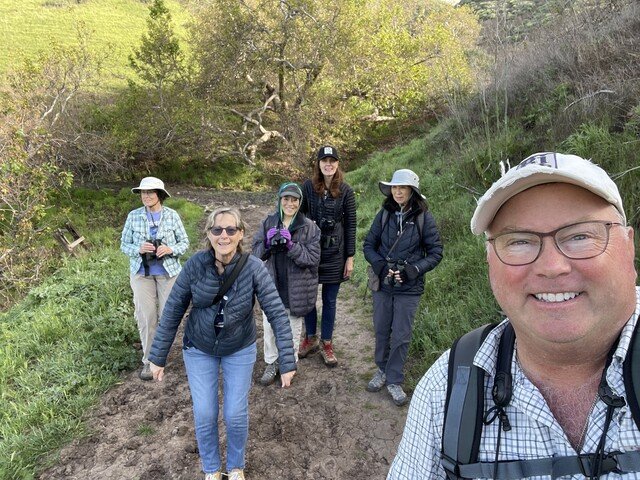Cedar Nature: Wei Xue
On April 13, a warm, sunny day, the Cedar Nature Team set out on our hike for Birdathon fundraising. We split into two groups: one ventured to Sunol Regional Wilderness to seek the majestic pileated woodpecker, the colorful merganser, and the iconic California quail; the other headed to Vasona Lake County Park—a charming urban oasis set around a scenic lake with a vintage train—offering sightings of waterfowl and woodland birds.
Cedar Nature: Kaiting
Seven participants went to Sunol, ranging in age from 8 to 80! Not long after we started, we encountered a Pileated Woodpecker drumming hard on the shack, which attracted everyone’s attention. We stopped by a tree for a while and then luckily saw a pair of Lawrence’s goldfinches – what a nice surprise! We observed around 26 bird species and more than 30 kinds of wildflowers and plants on this field trip. Spring is the best time of the year. The hiking was moderate, and the weather was perfect with a cool breeze in Sunol Regional Wilderness Park.
Black-crowned Night-Heron: Bohao Huang
A team of eleven set out to Vasona Lake, surrounded by the vibrant colors of spring. Vasona Lake Park was chosen for its rich mix of habitats—lake, trees, and open grassy areas—making it a great spot to observe a wide variety of bird species. The outing did not disappoint: on the water, we saw waterfowl such as Buffleheads and Ruddy Ducks; in the reed beds along the lakeshore, we spotted herons, including Great Blue Herons and Green Herons; and swallows zipped swiftly over the lake’s surface. In the lakeside trees, we encountered oak titmice and goldfinches busy collecting nest materials, while hawks and falcons occasionally circled overhead. The trip’s true highlights were the juvenile bald eagle that swept by us at close range and the delightful hooded oriole perched serenely in a palm tree. The House Finch and Acorn Woodpecker nest added even more surprises. In total, we observed 40 bird species—what a rewarding experience, especially for many in our group who were birdwatching for the first time!
4月13日,风和日丽,Cedar Nature Team 出发远足为观鸟马拉松募款。我们分成两组分头行动:一组前往 Sunol Regional Wilderness,寻觅红头发的啄木鸟、漂亮的秋沙鸭,以及标志性的加州鹌鹑;另一组则奔赴 Vasona 湖县立公园——这个迷人的城市绿洲环绕着美丽的湖泊和一列复古小火车,可观赏到各类水鸟与森林鸟类。
这次观鸟行共有七位参与者,年龄从 8 岁到 80 岁不等!我们刚出发不久,就遇到了一只大斑啄木鸟在小屋上“咚咚咚”猛敲,引得大家纷纷围观。我们在一棵大树下驻足片刻,幸运地看见了一对劳伦斯金翅雀——真是惊喜满满!整个行程中,我们大约记录了 26 种鸟类,以及 30 多种野花和植物。春天果然是一年中最美的时节。徒步难度适中,Sunol 区域荒野公园的天气也十分宜人,伴着清爽的微风。
4月13日Cedar Nature的Vasona Lake小分队十二个人在满目春色中准时出发进行今年的Birdathon活动,选择这个地点是因为Vasona Lake公园有湖有树有草坪,可以看到各种种类的鸟。活动全程不负所望,我们在水面上看到了Bufflehead, Ruddy Duck等水鸟,在岸边芦苇丛中看到了大蓝鹭、绿鹭等鹭类,湖面上还看到了快速穿梭飞行的各种燕子。岸上的树林中也看到Oak Titmouce, Goldfinch等忙着筑巢的林鸟,头顶还时不时有hawk盘旋。当然全程的高光当属从我们眼前近距离掠过的白头海雕的亚成鸟,以及在棕榈树上可爱的hooded oriole。House finch 和acorn woodpecker的巢更添意外惊喜。全程我们看到了40种鸟,这对我们队伍中很多第一次观鸟的队员来说是很大的收获!
Ebird list
Sunol Regional Wilderness: https://ebird.org/checklist/S225369166
Vasona Lake Team: https://ebird.org/checklist/S225399929


















